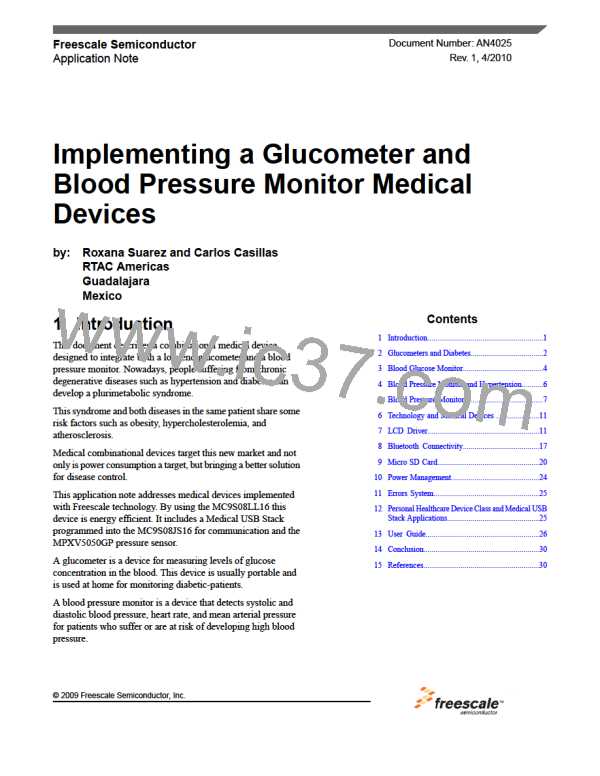Glucometers and Diabetes
Figure 2. Electrode reactions between glucose and gluconic acid
The sensor used as a blood-glucose meter is based on a glucose oxide electrode. The glucose oxides were immobilized in a
platinized activated carbon electrode. The enzyme electrode was used for amperometry determination by using an electrochemical
detection of enzymically produced hydrogen peroxide. The sensor is composed of various electrodes; a glucose oxide membrane
layer, a polyurethane film that is permeable by the glucose, oxygen, and hydrogen peroxide.
2.3 Amperometry
Amperometry measures electric current between a pair of electrodes that are driving the electrolysis reaction. Oxygen diffuses
through the membrane and a voltage is applied to the Pt electrode reducing O2 to H2
Figure 3.Test strip basic block diagram
These reactive electrodes are amperometric type sensors that use a three electrode design. This approach is useful when using
amperometric sensors due to the reliability of measuring voltage and current in the same chemical reaction. Three electrode
models use a working electrode (WE), reference electrode (RE), and a counter electrode (CE). After this current is produced
this must be changed to voltage for processing by the MCU. This action is performed by the transimpedance amplifier. Finally,
the MCU detects and processes this signal with theADC module. For a transimpedance amplifier and sensor designs for medical
applications go to Medical Application User Guide at www.freescale.com.
Implementing a Glucometer and Blood Pressure Monitor Medical Devices, Rev. 1, 4/2010
Freescale Semiconductor, Inc.
3

 FREESCALE [ Freescale ]
FREESCALE [ Freescale ]